Abstract
BACKGROUND: Rural physicians need access to quality medical information, but accessing information is difficult in rural settings. Digital health sciences libraries (DHSLs) offer the potential to make information more accessible to rural physicians. A telemedicine network was deployed to six rural hospitals in Iowa. Computers were installed allowing access to a DHSL and training sessions were held. The purpose of this study was to examine the barriers to use of a DHSL by rural physicians. METHODS: Approximately one year after deployment of the telemedicine network, physicians were surveyed using a modified critical incident technique. RESULTS: Seventy percent of the eligible physicians responded and 33% had used the DHSL. Primary barriers included insufficient training, being too time consuming to use, and distance of computers from physicians' practice sites. Non-DHSL users cited the difficulty of using the DHSL as their greatest barrier, while DHSL users cited the quality of the information resources. CONCLUSIONS: This study identifies a number of barriers that exist to rural physicians use of a DHSL. Potential solutions to these barriers are discussed. DHSLs will finally reach their potential when they can be delivered by easy to use handheld computers seamlessly integrated into the rural physician's workflow.
Full text
PDF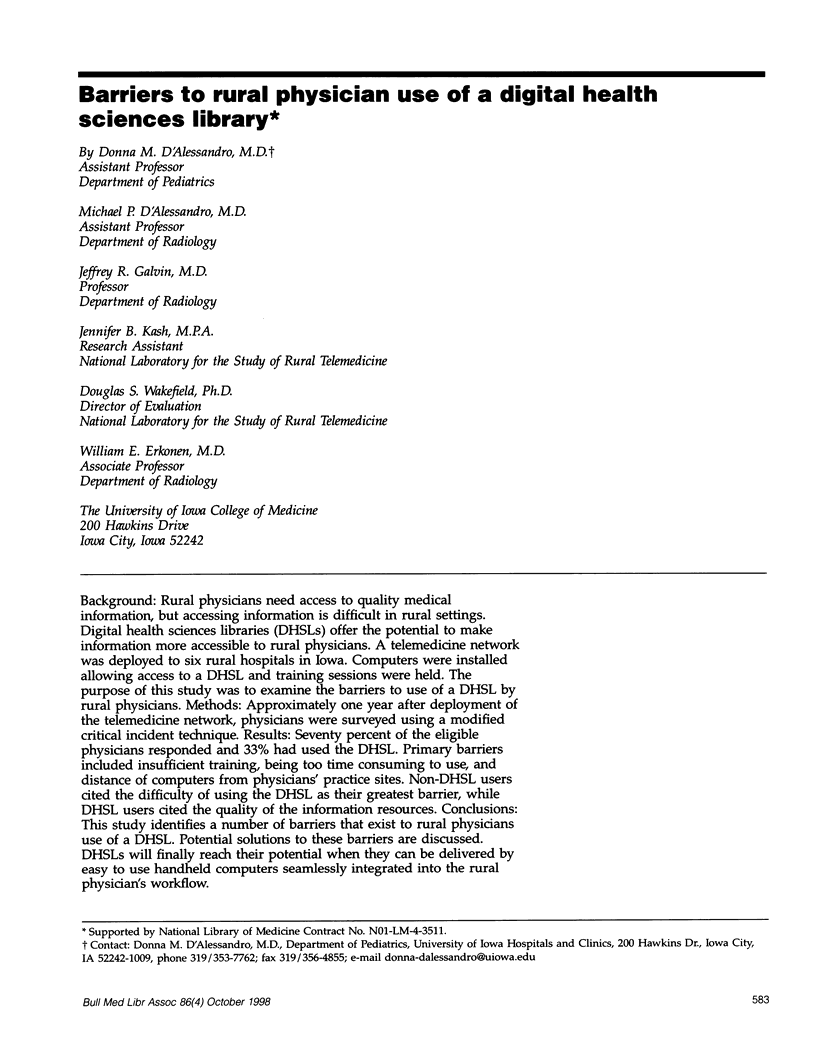
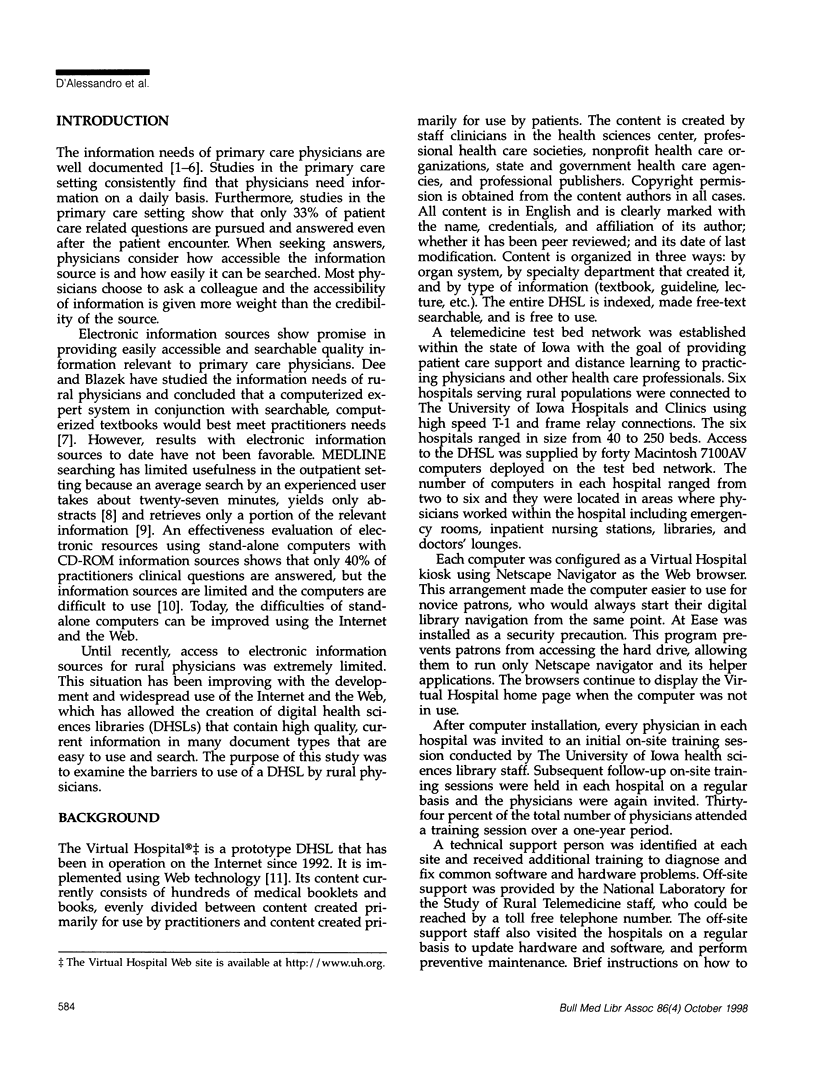
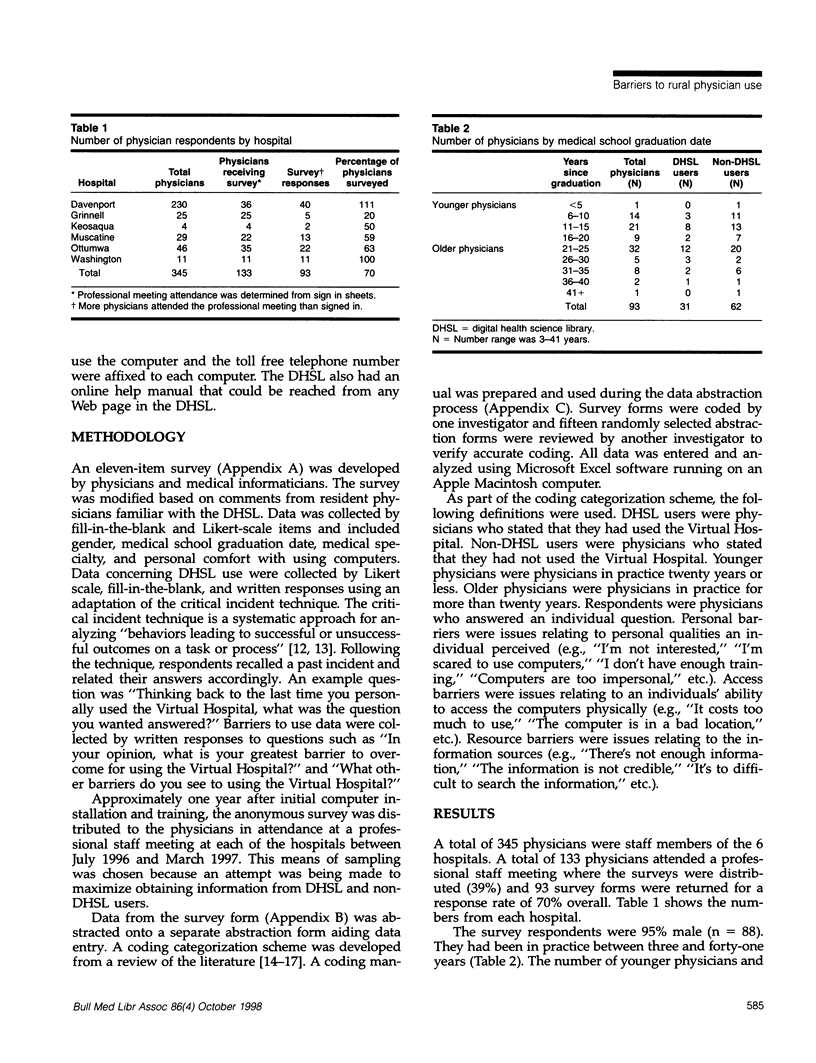
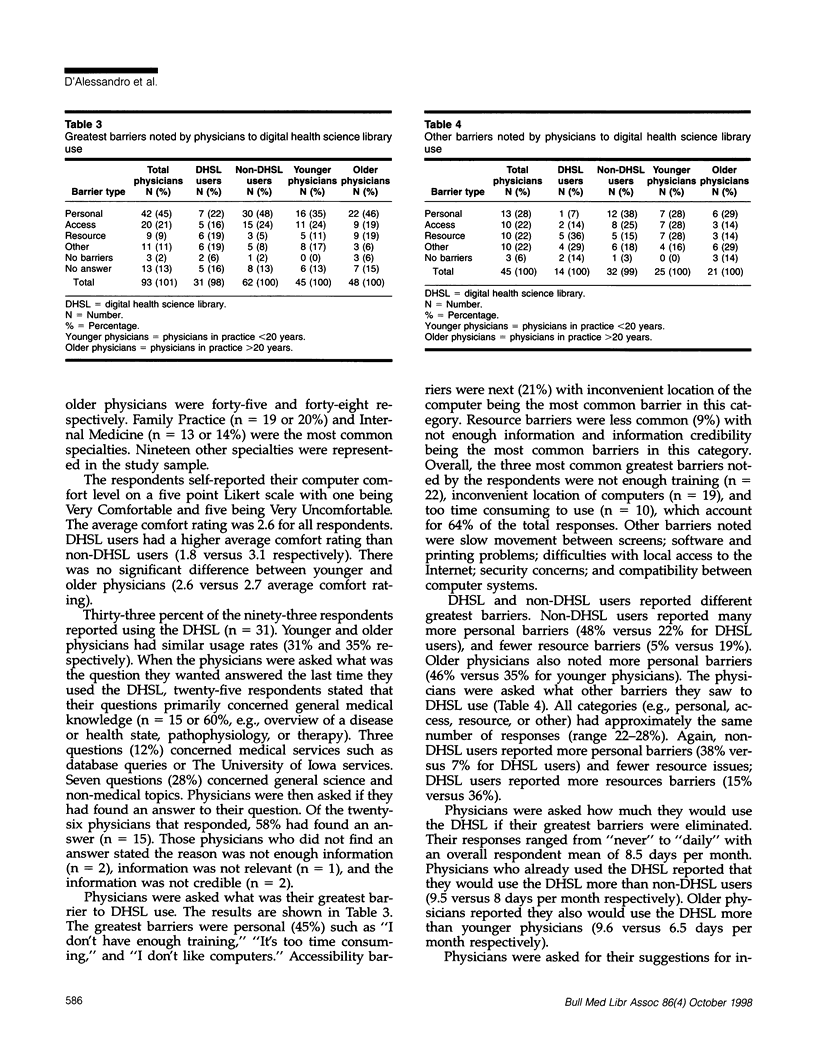
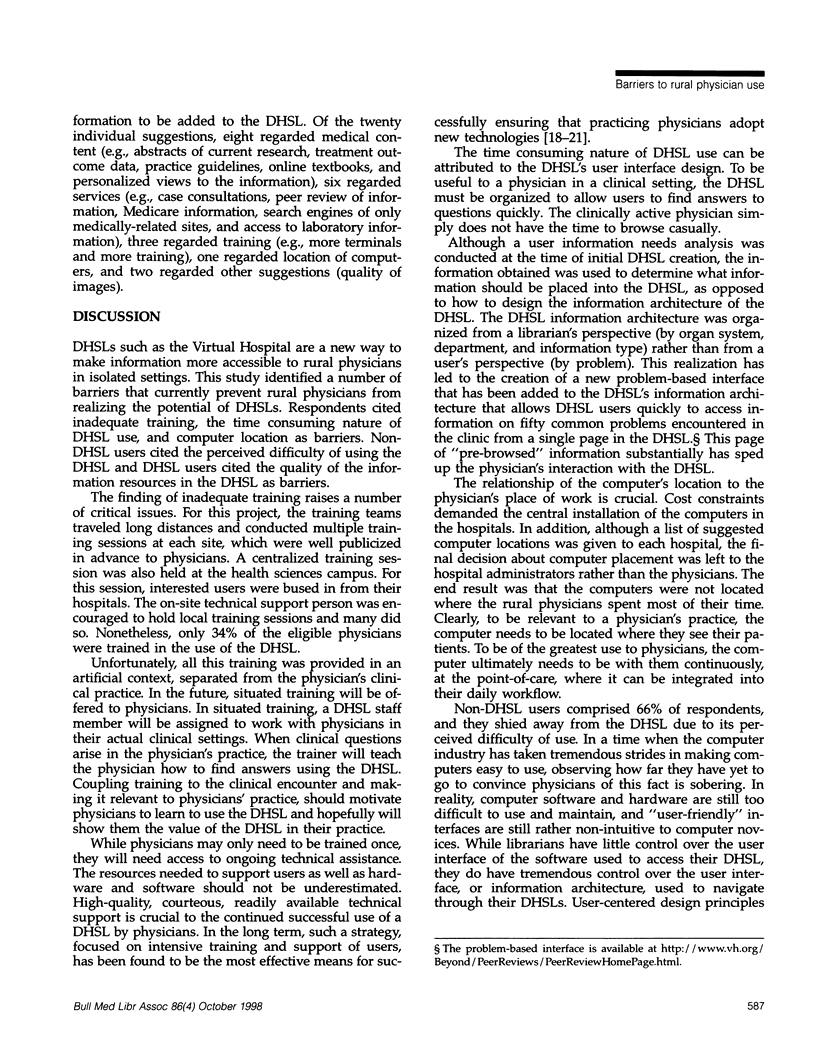
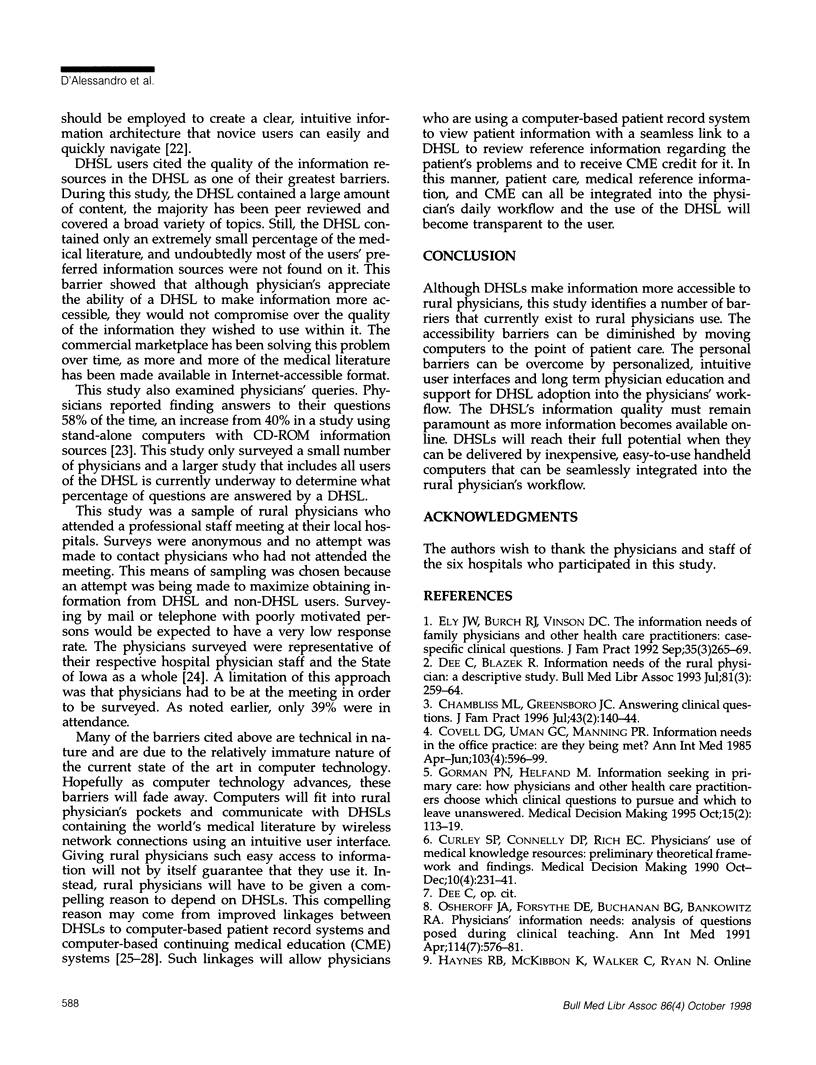
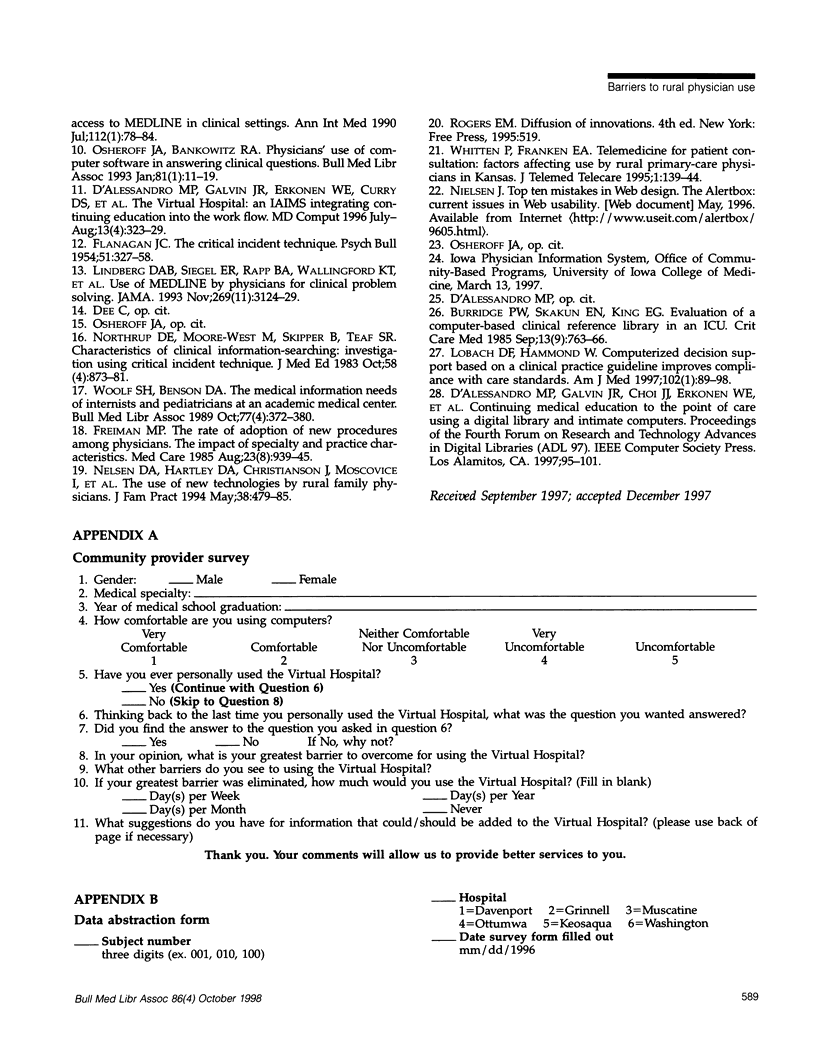
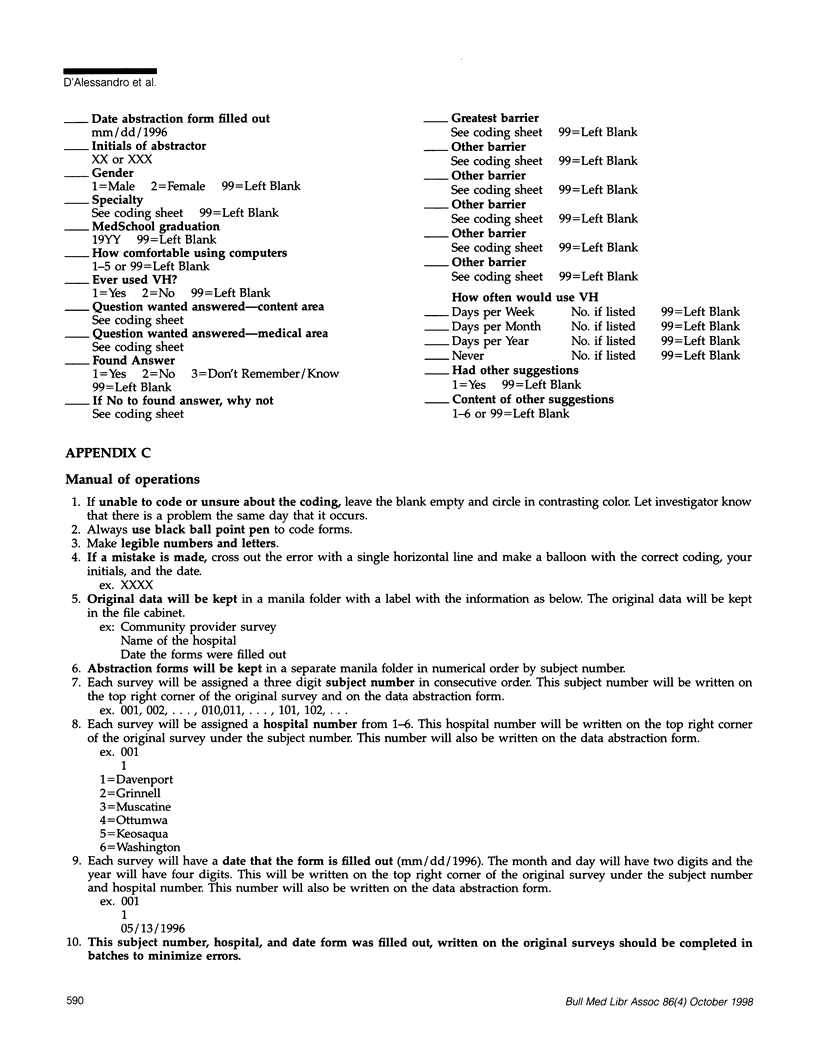
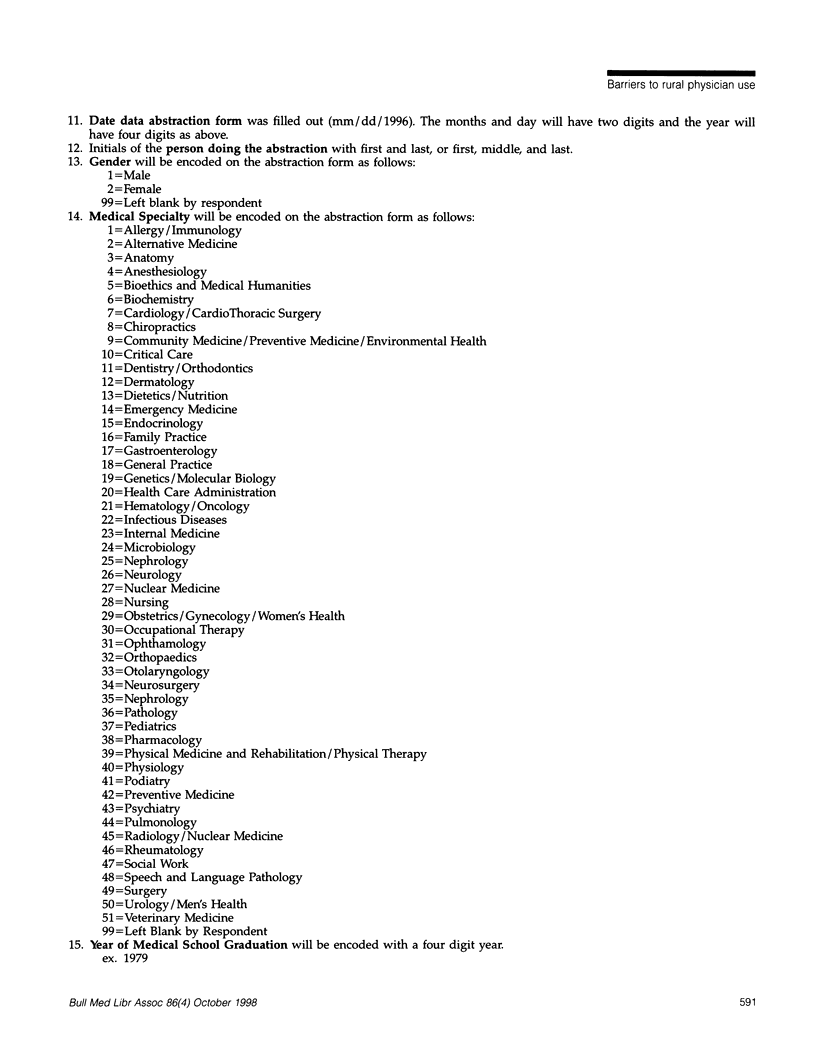
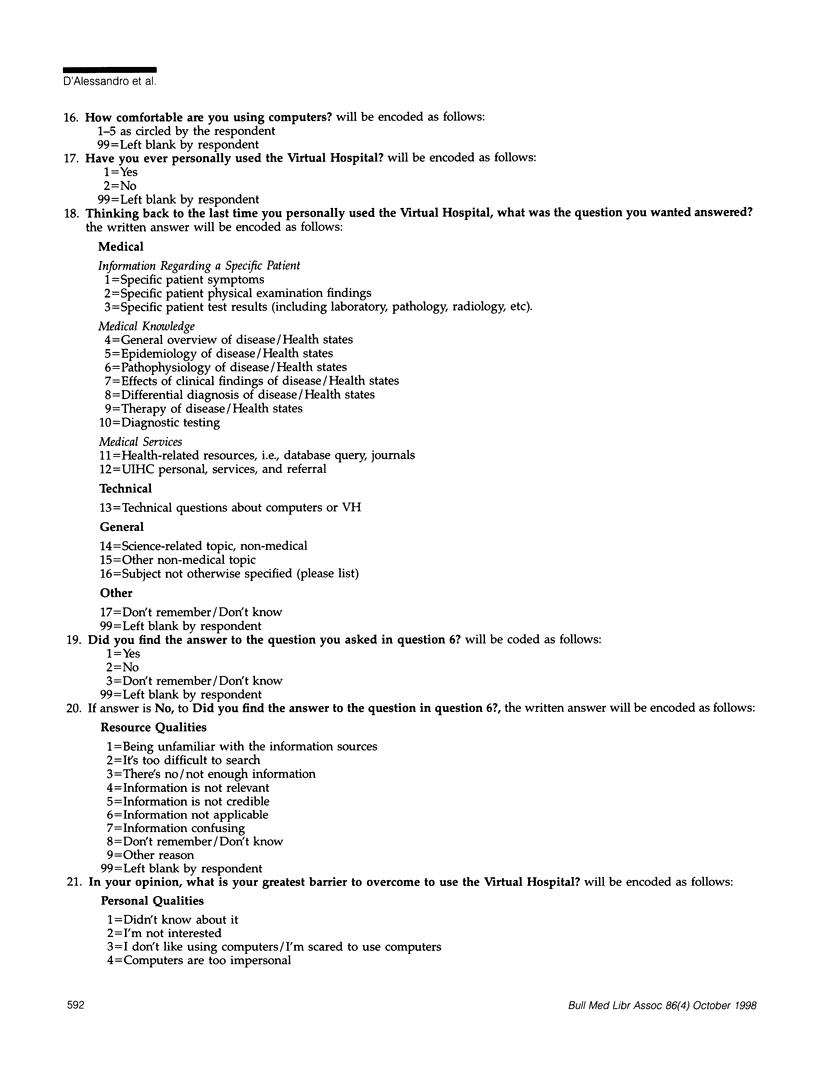
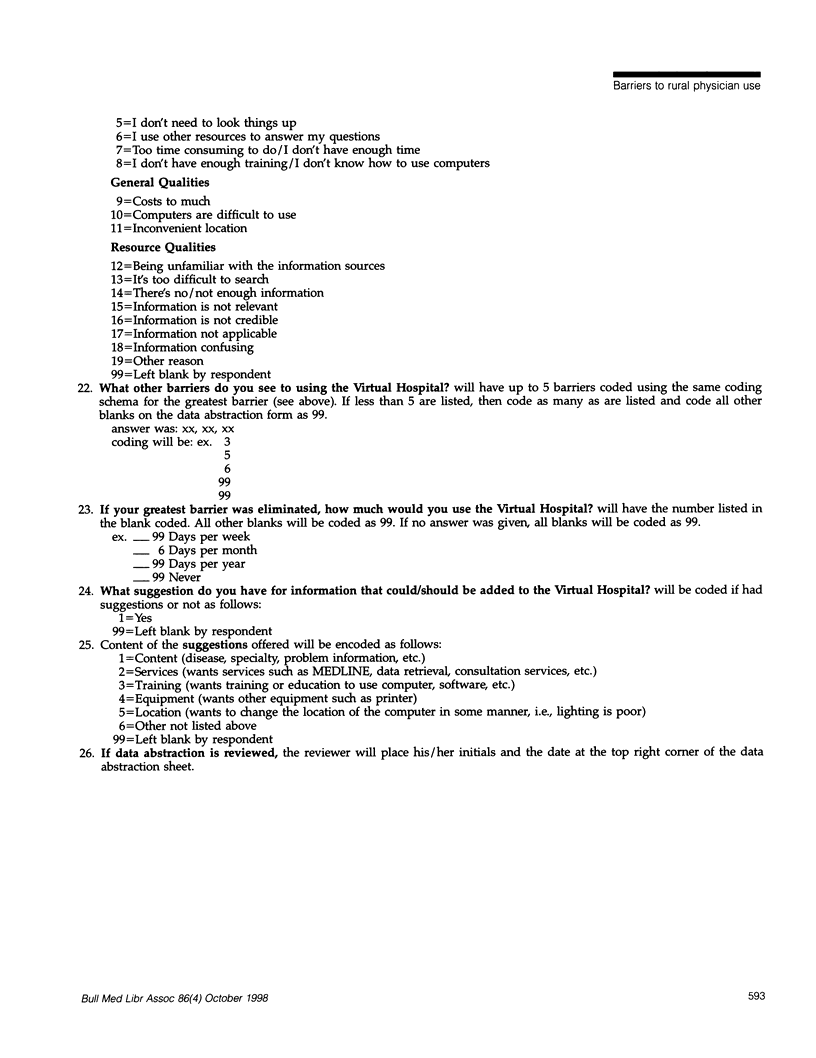
Selected References
These references are in PubMed. This may not be the complete list of references from this article.
- Burridge P. W., Skakun E. N., King E. G. Evaluation of a computer-based clinical reference library in an ICU. Crit Care Med. 1985 Sep;13(9):763–766. doi: 10.1097/00003246-198509000-00016. [DOI] [PubMed] [Google Scholar]
- Chambliss M. L., Conley J. Answering clinical questions. J Fam Pract. 1996 Aug;43(2):140–144. [PubMed] [Google Scholar]
- Covell D. G., Uman G. C., Manning P. R. Information needs in office practice: are they being met? Ann Intern Med. 1985 Oct;103(4):596–599. doi: 10.7326/0003-4819-103-4-596. [DOI] [PubMed] [Google Scholar]
- Curley S. P., Connelly D. P., Rich E. C. Physicians' use of medical knowledge resources: preliminary theoretical framework and findings. Med Decis Making. 1990 Oct-Dec;10(4):231–241. doi: 10.1177/0272989X9001000401. [DOI] [PubMed] [Google Scholar]
- D'Alessandro M. P., Galvin J. R., Erkonen W. E., Curry D. S., Flanagan J. R., D'Alessandro D. M., Lacey D. L., Wagner J. R. The Virtual Hospital: an IAIMS integrating continuing education into the work flow. MD Comput. 1996 Jul-Aug;13(4):323–329. [PubMed] [Google Scholar]
- Dee C., Blazek R. Information needs of the rural physician: a descriptive study. Bull Med Libr Assoc. 1993 Jul;81(3):259–264. [PMC free article] [PubMed] [Google Scholar]
- Ely J. W., Burch R. J., Vinson D. C. The information needs of family physicians: case-specific clinical questions. J Fam Pract. 1992 Sep;35(3):265–269. [PubMed] [Google Scholar]
- FLANAGAN J. C. The critical incident technique. Psychol Bull. 1954 Jul;51(4):327–358. doi: 10.1037/h0061470. [DOI] [PubMed] [Google Scholar]
- Freiman M. P. The rate of adoption of new procedures among physicians. The impact of specialty and practice characteristics. Med Care. 1985 Aug;23(8):939–945. doi: 10.1097/00005650-198508000-00001. [DOI] [PubMed] [Google Scholar]
- Gorman P. N., Helfand M. Information seeking in primary care: how physicians choose which clinical questions to pursue and which to leave unanswered. Med Decis Making. 1995 Apr-Jun;15(2):113–119. doi: 10.1177/0272989X9501500203. [DOI] [PubMed] [Google Scholar]
- Haynes R. B., McKibbon K. A., Walker C. J., Ryan N., Fitzgerald D., Ramsden M. F. Online access to MEDLINE in clinical settings. A study of use and usefulness. Ann Intern Med. 1990 Jan 1;112(1):78–84. doi: 10.7326/0003-4819-112-1-78. [DOI] [PubMed] [Google Scholar]
- Lindberg D. A., Siegel E. R., Rapp B. A., Wallingford K. T., Wilson S. R. Use of MEDLINE by physicians for clinical problem solving. JAMA. 1993 Jun 23;269(24):3124–3129. [PubMed] [Google Scholar]
- Lobach D. F., Hammond W. E. Computerized decision support based on a clinical practice guideline improves compliance with care standards. Am J Med. 1997 Jan;102(1):89–98. doi: 10.1016/s0002-9343(96)00382-8. [DOI] [PubMed] [Google Scholar]
- Nelsen D. A., Jr, Hartley D. A., Christianson J., Moscovice I., Chen M. M. The use of new technologies by rural family physicians. J Fam Pract. 1994 May;38(5):479–485. [PubMed] [Google Scholar]
- Osheroff J. A., Bankowitz R. A. Physicians' use of computer software in answering clinical questions. Bull Med Libr Assoc. 1993 Jan;81(1):11–19. [PMC free article] [PubMed] [Google Scholar]
- Osheroff J. A., Forsythe D. E., Buchanan B. G., Bankowitz R. A., Blumenfeld B. H., Miller R. A. Physicians' information needs: analysis of questions posed during clinical teaching. Ann Intern Med. 1991 Apr 1;114(7):576–581. doi: 10.7326/0003-4819-114-7-576. [DOI] [PubMed] [Google Scholar]
- Whitten P., Franken E. A. Telemedicine for patient consultation: factors affecting use by rural primary-care physicians in Kansas. J Telemed Telecare. 1995;1(3):139–144. doi: 10.1177/1357633X9500100303. [DOI] [PubMed] [Google Scholar]
- Woolf S. H., Benson D. A. The medical information needs of internists and pediatricians at an academic medical center. Bull Med Libr Assoc. 1989 Oct;77(4):372–380. [PMC free article] [PubMed] [Google Scholar]


